Tìm Sách
Sách tiếng Anh-English >> The Quantum & the Lotus
Thông tin tra cứu
- Tên sách : The Quantum & the Lotus
- Tác giả : Matthieu Ricard & Trinh Xuan Thuan
- Dịch giả :
- Ngôn ngữ : Anh
- Số trang : 307
- Nhà xuất bản : Crown Publishers-New York 2001
- Năm xuất bản : 2001
- Phân loại : Sách tiếng Anh-English
- MCB : 12010000006638
- OPAC :
- Tóm tắt :
INTRODUCTION
How should I lead my life? How should I live in society? What is knowable? These three questions have puzzled mankind through the ages. Ideally, our lives should lead us to a feeling of plenitude, so that we have no regrets at the moment when we die. Life in society should inspire US with a sense of universal responsibility. Knowledge should teach US about both the nature of the world around US and about our own minds.
These same questions lie at the heart of the practices of science, philosophy, politics, art, social work, and spirituality. Artificially compartmentalizing these activities, as so often happens in our lives today, leads inevitably to diminished perspectives. Without a wisdom bred of altruism, science and politics are double-edged swords, ethics is blind, emotions run wild, and spirituality becomes illusory.
From the seventeenth century, the time of the scientific revolution, to the present day, many people have considered science to be synonymous with knowledge. The exponential increase in the accumulation of information driven by the rise of science is not about to slow down. Meanwhile, religious practice has declined in democratic, secular states, while often becoming more radical in religious states. The great spiritual traditions, whether they were dogmatic or based rather on pure contemplative experience, provided powerful ethical rules that people could use to structure and inspire their lives. As science has developed, many people have become disillusioned with the teachings of the world’s religions, and a secular faith in the revelations of science and the efficiency of technology has evolved. Others, however, point out that science is incapable of revealing all truths, and that while technology has produced huge benefits, the ravages it has caused are at least as great. What is more, science is silent when it comes to providing wisdom about how we should live.
The correct view of science is as an instrument, intrinsically neither good nor bad. Either praising it to the skies or damning it is as senseless as applauding or criticizing strength. The strength of an arm can kill as well as save. Scientists are no better or worse than other human beings in general. Science does not produce wisdom. While the insights of science can help us change our world, only human thought and concern can enlighten us about the path we should follow in life. As a complement to science, therefore, we must also cultivate a “science of the mind”, or what we can call spirituality. This spirituality is not a luxury but a necessity.
Over the last twenty years, a dialogue has been conducted between Buddhism and science, largely because of an interest in science shown by certain Buddhist thinkers, notably the Dalai Lama. In 1987, businessman Adam Engle and scientist Francisco Varela first organized what has become a regular series of encounters between the Dalai Lama and a number of eminent scientists: neurologists, biologists, psychiatrists, physicists, and philosophers. As the participants wrote: “An extraordinary quality of these meetings has been the open-minded yet critical attitude of the Buddhists and the scientists, both eager to expand their horizons by learning of the methods of inquiry and the insights of the other. Published accounts of these ‘Mind and Life’1 meetings have been received with growing enthusiasm by people interested in cross-cultural and interdisciplinary dialogue, especially concerning the nature of the mind”. Their titles include Gentle Bridges; Healing Emotions; Sleeping, Dreaming and Dying; and Science and Compassion. They have been complemented by more-in-depth studies such as The Embodied Mind by Francisco Varela et al., and Choosing Reality and The Taboo of Subjectivity by B. Alan Wallace. The conversations recorded in this book were undertaken in very much the same spirit.
The main difference between the pursuit of knowledge in science versus the same pursuit in Buddhism is their ultimate goals. In Buddhism, knowledge is acquired essentially for therapeutic purposes. The objective is to free ourselves from the suffering that is caused by our undue attachment to the apparent reality of the external world and by our servitude to our individual egos, which we imagine reside at the center of our being.
Buddhism stresses the importance of elucidating the nature of the mind through direct contemplative experience. Over the centuries it has devised a profound and rigorous, approach to understanding mental states and the ultimate nature of mind. The mind is behind every experience in life. It is also what determines the way we see the world. It takes only the slightest change in our minds, in how we deal with mental states and perceive people and things, for “our” world to be turned completely upside-down.
Profound as the findings of Buddhism are, it is important to keep in mind as you read this book that the Buddha’s teachings are not dogmatic. The teachings should be considered as the insights of a guidebook that allows the traveler to follow in the Buddha’s footsteps. Buddhism stands ready to revise its beliefs at any moment if they are proved to be wrong. Not that it has any doubts about the basic truth of its discoveries, nor does it expect that the results it has built up over 2,500 years of contemplative science will suddenly be invalidated. The teachings of Buddhism are based entirely on experience. In its quest for knowledge, Buddhism does not run away from contradictions; it feeds on them. The countless metaphysical debates that it has conducted over the centuries with Hindu philosophers, and the dialogues that it continues to have with science and with religions, have allowed it to hone, focus, and widen its philosophical ideas, its logic, and its understanding of the world.
But Buddhism’s open-minded attitude is not cheap opportunism. It has an impressive philosophical tradition to offer, as well as profound and inspiring texts on the contemplative life, and a spiritual practice that requires unbreakable perseverance. The inner transformation that leads to enlightenment is quite different from philosophical research or investigation in the natural sciences. Buddhism is basically a science of enlightenment.
The dialogues you are about to read are not intended to make science sound mystical, or to bolster the beliefs of Buddhism with the discoveries of science. The aim is to appreciate the way in which science fits into a larger conception of life that takes account of the important role of subjective experience. These dialogues seek to bridge the gap between the way things are and the way they appear. Buddhism can resolve the discomforting contradiction between the traditional view of objective reality, which considers that phenomena exist “out there” as really and solidly as they seem to do, and recent discoveries in science (physics specifically) that refute this sort of objective reality. One of the fathers of quantum physics, Werner Heisenberg, wrote: “I consider the ambition of overcoming opposites, including also a synthesis embracing both rational understanding and the mystical experience of unity, to be the mythos, spoken or unspoken, of our present day and age”.
These dialogues reflect the perspectives of two quite different lifestyles: that of an astrophysicist who was born a Buddhist-, and who wanted to confront his scientific knowledge with his philosophical origins; and that of a Western scientist who became a Buddhist monk, whose personal experience has led him to compare these two approaches to reality.
Trinh Xuan Thuan’s life encompasses three cultures: Vietnamese, French, and American. He was born in Hanoi in 1948 during the colonial war, six years before the French defeat at Dien Bien Phu. He was educated in French schools. Deeply impressed by French culture, in 1966 he decided to study physics in France, because he thought that it could answer some of the questions he was asking himself about the world. But General de Gaulle’s famous speech made that very year in Phnom Penh, demanding the immediate retreat of all American troops from Southeast Asia, put an end to his plans. The Vietnamese government broke off diplomatic relations with France, and the Vietnamese people could no longer go there to study. After a year at the University of Lausanne, in Switzerland, Thuan left for the United States, where he was drawn to the California Institute of Technology, the Mecca of astrophysicists. In particular, Cal Tech ran a telescope with a mirror diameter of five meters on Mount Palomar; this was the largest telescope in the world in 1967. The shadow of Edwin Hubble, who discovered the galaxies outside the Milky Way and their outward motion, which led to the theory of the expanding universe, lay over the campus.
Thuan’s studies coincided with an extremely exciting period in astrophysics, when many new phenomena were being discovered. As he puts it, “In such an intellectual ferment, I just had to become an astrophysicist.” Since then, he has continued observing the universe and has become an expert in the formation of galaxies. He has also published a number of widely appreciated books on popular science.7 He now teaches at the University of Virginia.
As for me, I studied to become a scientist. I did several years of research at the Pasteur Institute, in the cellular genetics department run by Professor Francois Jacob, who won the Nobel prize for medicine. It was a highly stimulating intellectual atmosphere. Over time, I became interested in the teachings of Buddhism. In 1967 I went to India to meet great Tibetan teachers. I became the disciple of one of them, Kangyur Rinpoche. For several years I returned each summer to the inspiring atmosphere of his hermitage/monastery in Darjeeling, while still pursuing my scientific research. In 1972, when I had completed my doctoral dissertation, I decided that, rather than take up a life of science, I would move to the Himalayas. I lived in India, then in Bhutan and Nepal, where I spent twelve years with my second teacher, Dilgo Khyentse Rinpoche. I had the chance to go to Tibet with him on several occasions, despite the tragic situation that still prevailed there after the Chinese invasion, and that still prevails. I now live in Shechen Monastery, near Kathmandu.
I first met Thuan during the Summer University in Andorra in 1997, and we had many fascinating discussions during our long walks together in the inspiring mountain scenery of the Pyrenees. This book was born from those friendly exchanges, which sometimes united US and sometimes divided us.
CONTENTS
- AT THE CROSSROADS………………………………….. 7
- TO BE AND NOT TO BE…………………………………. 23
- 3. IN SEARCH OF THE GREAT WATCHMAKER… 37
- 4. THE UNIVERSE IN A GRAIN OF SAND………….. 61
- 5. MIRAGES OF REALITY………………………………….. 79
- LIKE A BOLT FROM THE BLUE…………………….. 101
- 7. EACH TO HIS OWN REALITY………………………… 113
- QUESTIONS OF TIME……………………………………. 127
- CHAOS AND HARMONY……………………………….. 141
- THE VIRTUAL FRONTIER……………………………. 161
- ROBOTS THAT THINK THEY CAN THINK?…. 183
- THE GRAMMAR OF THE JUNIVERSE………….. 205
- REASON AND CONTEMPLATION………………… 229
- BEAUTY IS IN THE EYE OF THE BEHOLDER. 251
- FROM MEDITATION TO ACTION………………… 257
- THE MONK S CONCLUSION………………………… 267
- THE SCIENTIST’S CONCLUSION………………….. 275
Notes
Scientific Glossary
Buddhist Glossary
Acknowledgments
Index
 Facebook
Facebook
 Google
Google
 Google+
Google+
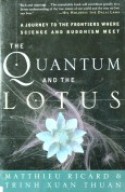

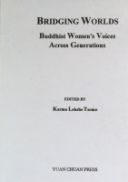


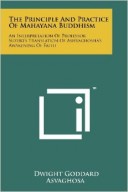
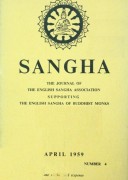
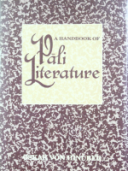
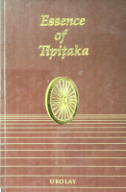
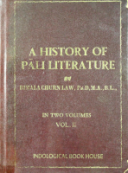


_thumb.jpg)





